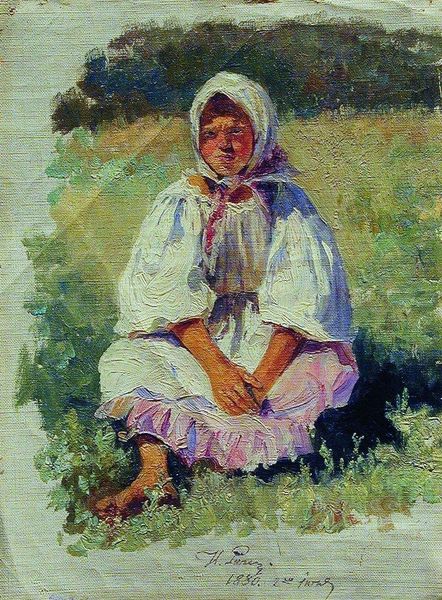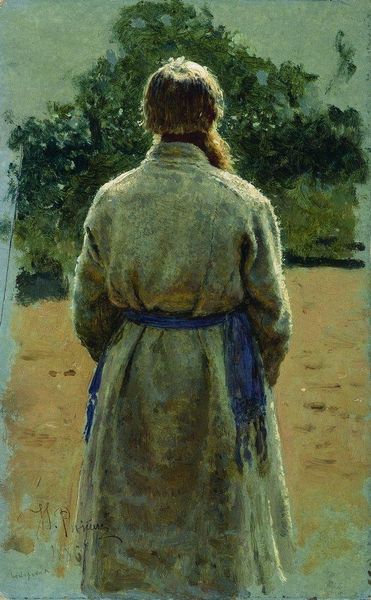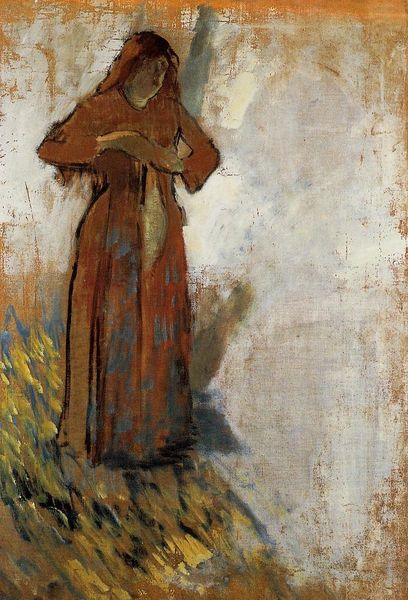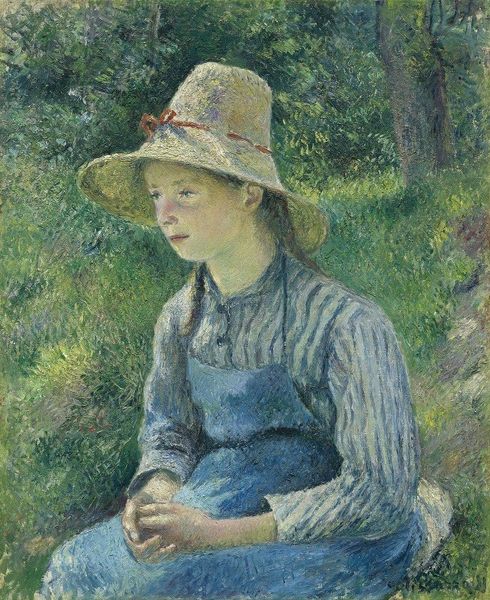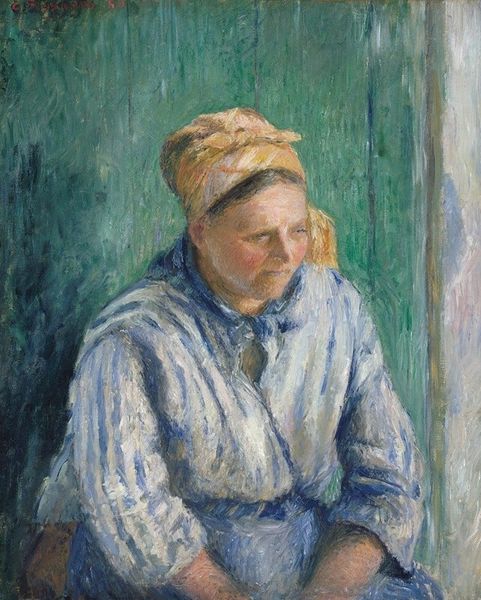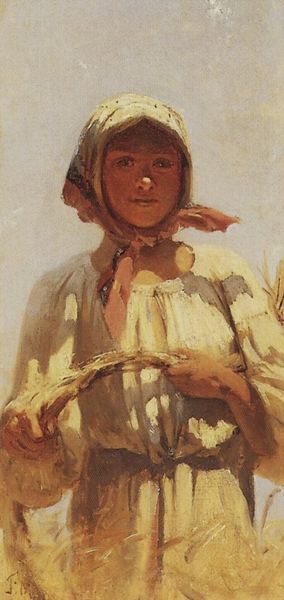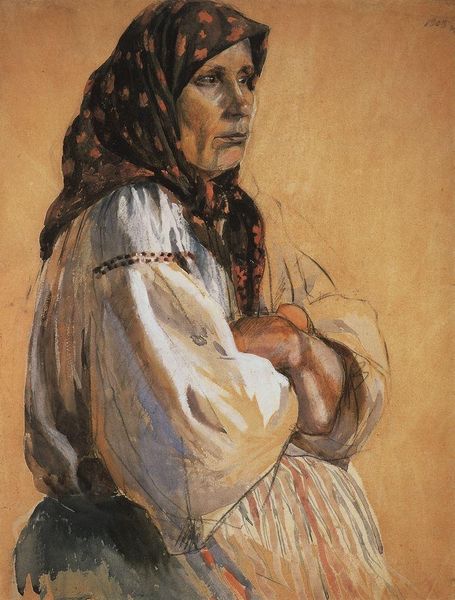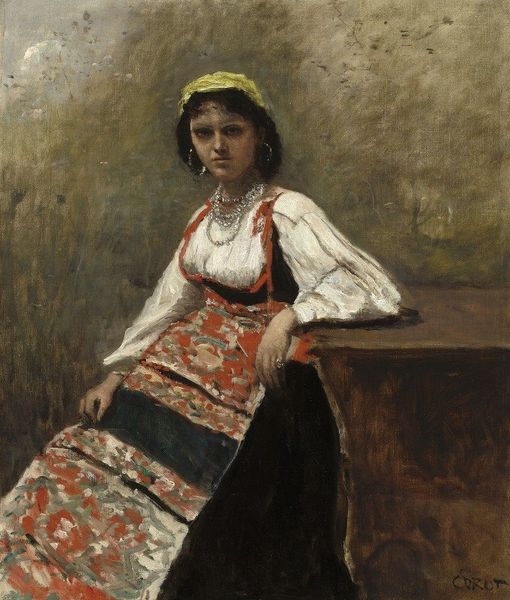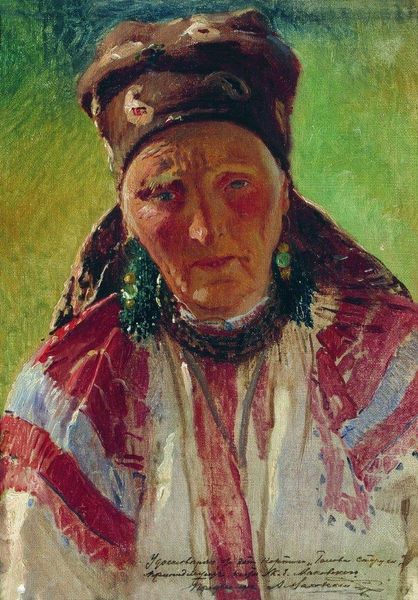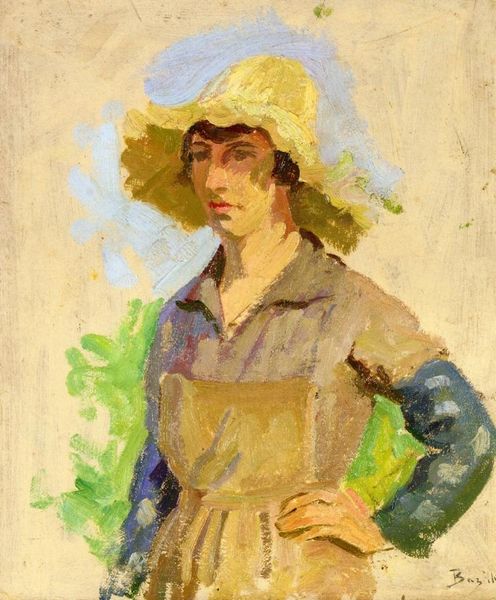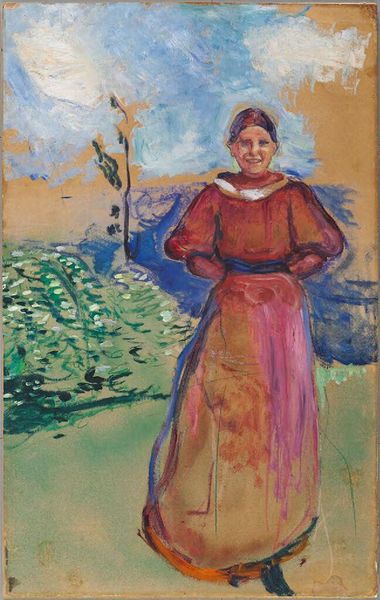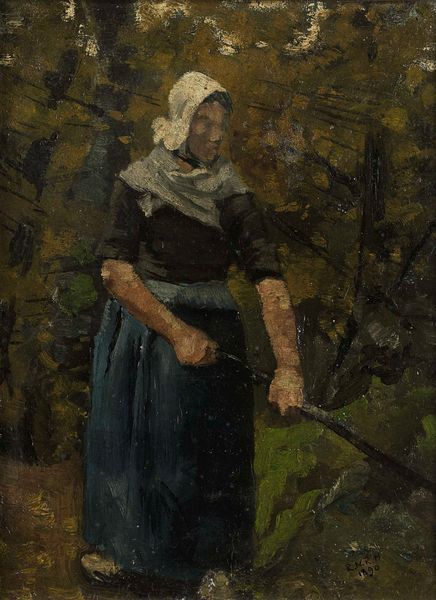
oil-paint
#
portrait
#
oil-paint
#
painted
#
oil painting
#
studio composition
#
russian-avant-garde
#
genre-painting
#
portrait art
#
realism
Dimensions: 18 x 12 cm
Copyright: Public domain
Curator: Up next we have "Old Woman," a moving oil on canvas portrait, painted by Ilya Repin while at the Abramtsevo Colony. Editor: The first thing I notice is how powerfully Repin captures a sense of age, and resilience. The thick brushstrokes, the subtle color variations, the textures… they speak volumes. Curator: Absolutely. Looking at this work in the context of Repin's other paintings, and his engagement with the Abramtsevo circle, it’s important to recognize this image fits squarely into a tradition of elevating the peasant class that was so politically crucial for Russian intellectuals at the time. These kinds of idealized images masked some pretty significant rural hardships, as you might imagine. Editor: While I agree that the social context adds layers of understanding, I am primarily drawn to how Repin manipulates light. See how it gently illuminates her face? Curator: Yes, there’s that interesting contrast between the areas that are lit, like the high points on her cheeks, her forehead and the end of her nose, with those that fall into shadow. He’s clearly emphasizing the dignity of labor through her facial details. It’s a face marked by experience, revealing a quiet strength. This type of imagery functioned almost as a call to action to improve living conditions. It speaks volumes about the debates on Russian identity raging at that moment. Editor: I notice how he renders the background with very little detail and the texture seems rougher as it is more indistinct. The choice of placing the focal point squarely on the woman draws me to consider her own subjective reality above anything else. The brushstrokes function as units, each carefully contributing to the overall structure. I feel a deep, wordless connection. Curator: The way this work functioned culturally is significant; these representations played a crucial role in fostering a sense of national identity—even a pan-Slavic consciousness. As we view this image, let's ask ourselves what purpose such images play in national identity building now. Editor: I appreciate that new perspective. Examining Repin's manipulation of color and texture alongside its broader social functions grants me an enhanced, multi-faceted viewing experience.
Comments
No comments
Be the first to comment and join the conversation on the ultimate creative platform.
